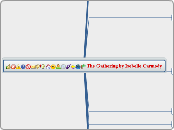Democratic Understanding and Civic Values
Does not apply to world history
World History and Geography: Medieval and Early Modern Times
Knowledge and Cultural UnderStanding
Historical
7.1.1. Study the early strengths and lasting contributions of Rome (e.g., significance of Roman citizenship; rights under Roman law; Roman art, architecture, engineering, and philosophy; preservation and transmission of Christianity) and its ultimate internal weaknesses (e.g., rise of autonomous military powers within the empire, undermining of citizenship by the growth of corruption and slavery, lack of education, and distribution of news).
7.2.4. Discuss the expansion of Muslim rule through military conquests and treaties, emphasizing the cultural blending within Muslim civilization and the spread and acceptance of Islam and the Arabic language.
7.5.3. Describe the values, social customs, and traditions prescribed by the lord-vassal system consisting of shogun, daimyo, and samurai and the lasting influence of the warrior code in the twentieth century.
Ethical
7.9.5. Analyze how the Counter-Reformation revitalized the Catholic church and the forces that fostered the movement (e.g., St. Ignatius of Loyola and the Jesuits, the Council of Trent).
During the medieval period in Europe, the political power of the Kings and great nobles was often constrained by the actions of
A Elected Parliaments
B. High Church Officials
C. The Growing Middle Class
D. Organized Group of Serfs
7.6.8. Understand the importance of the Catholic church as a political, intellectual, and aesthetic institution (e.g., founding of universities, political and spiritual roles of the clergy, creation of monastic and mendicant religious orders, preservation of the Latin language and religious texts, St. Thomas Aquinas's synthesis of classical philosophy with Christian theology, and the concept of "natural law").
7.2.6. Understand the intellectual exchanges among Muslim scholars of Eurasia and Africa and the contributions Muslim scholars made to later civilizations in the areas of science, geography, mathematics, philosophy, medicine, art, and literature.
sociopolitical
7.5.3. Describe the values, social customs, and traditions prescribed by the lord-vassal system consisting of shogun, daimyo, and samurai and the lasting influence of the warrior code in the twentieth century.
7.2.3. Explain the significance of the Qur'an and the Sunnah as the primary sources of Islamic beliefs, practice, and law, and their influence in Muslims' daily life.
7.1.3 Describe the establishment by Constantine of the new capital in Constantinople and the development of the Byzantine Empire, with an emphasis on the consequences of the development of two distinct European civilizations, Eastern Orthodox and Roman Catholic, and their two distinct views on church-state relations.
Economic Literacy
7.4.2 Analyze the importance of family, labor specialization, and regional commerce in the development of states and cities in West Africa.
7.3.5. Trace the historic influence of such discoveries as tea, the manufacture of paper, wood-block printing, the compass, and gunpowder
7.11.3. Examine the origins of modern capitalism; the influence of mercantilism and cottage industry; the elements and importance of a market economy in seventeenth-century Europe; the changing international trading and marketing patterns, including their locations on a world map; and the influence of explorers and map makers.
Geographic Literacy
7.2.1. Identify the physical features and describe the climate of the Arabian peninsula, its relationship to surrounding bodies of land and water, and nomadic and sedentary ways of life.
7.1.2 Discuss the geographic borders of the empire at its height and the factors that threatened its territorial cohesion.
7.4.1 Study the Niger River and the relationship of vegetation zones of forest, savannah, and desert to trade in gold, salt, food, and slaves; and the growth of the Ghana and Mali empires.
Cultural Literacy
7.3.1. Describe the reunification of China under the Tang Dynasty and reasons for the spread of Buddhism in Tang China, Korea, and Japan.
7.6.2. Describe the spread of Christianity north of the Alps and the roles played by the early church and by monasteries in its diffusion after the fall of the western half of the Roman Empire
7.5.1. Describe the significance of Japan's proximity to China and Korea and the intellectual, linguistic, religious, and philosophical influence of those countries on Japan.
Goal of Skills Attainment and Social Participation
Bsic Study Skills
CCSS ELA-Literacy Reading 6-8.2 Determine the central ideas or information of a primary or secondary source; provide an accurate summary of the source distinct from priorknowledge or opinions.
CCSS ELA-Literacy Reading 6-8.3 Identify key steps in a text’s description of a process related to history/social studies (e.g., how a bill becomes law, how interest rates are raised or lowered).
CCSS ELA- lITERACY Writing Draw evidence from informational texts to support analysis reflection, and research
Critical Thinking skills
CCSS ELA-Literacy Reading 6-8.6 Identify aspects of a text that reveal an author’spoint of view or purpose (e.g., loaded language,inclusion or avoidance of particular facts).
CCSS ELA-Literacy Reading 6-8.9Analyze the relationship between a primary andsecondary source on the same topic.
CCSS ELA-Literacy Reading 6-8.2 Determine the central ideas or information of aprimary or secondary source; provide an accuratesummary of the source distinct from prior
knowledge or opinions.
Participation Skills
CCSS ELA-Literacy Writing 6-8.6 Use Technology, including the internet, to produce and publish writing and present the relationships between infoprmation and ideas clearly and efficiently.
CCSS ELA-Literacy Writing 6-8.7 Integrate visual information (e.g., in charts, graphs,photographs, videos, or maps) with otherinformation in print and digital texts.
Subtopic









